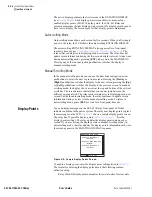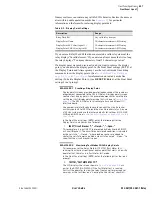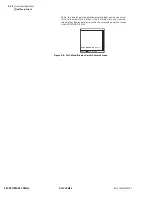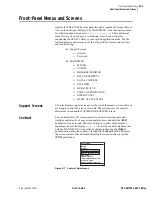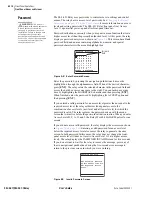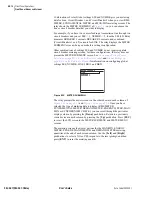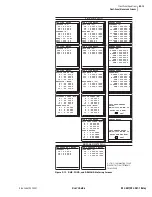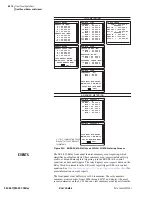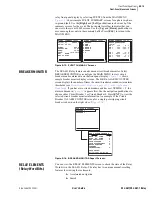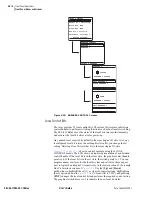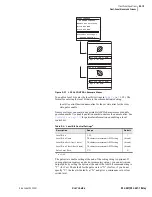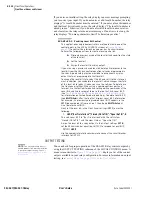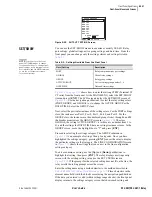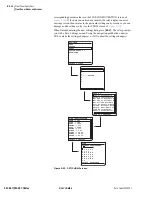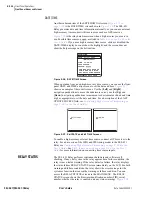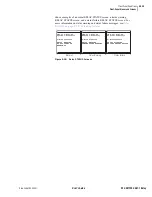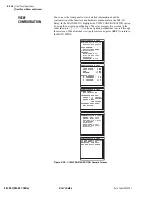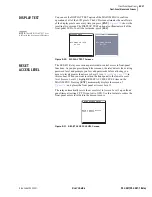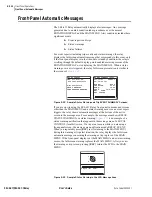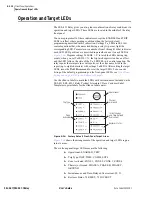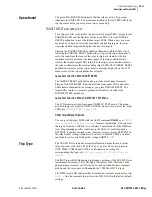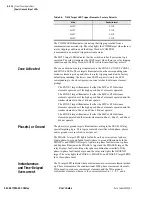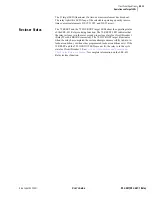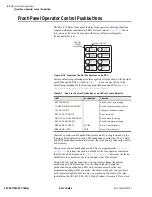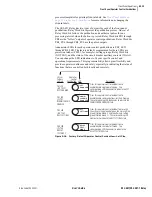
U.5.20
SEL-421/SEL-421-1 Relay
User’s Guide
Date Code 20020501
Front-Panel Operations
Front-Panel Menus and Screens
If you enter an invalid setting, the relay displays an error message prompting
you to correct your input. If you do not enter a valid local bit number, the relay
displays “A local bit number must be entered.” If you enter a local bit number
and that local bit is already in use, the relay displays “The local bit number is
already in use.” Likewise, if you do not enter valid local bit name, set alias,
and clear alias, the relay returns an error message. If an alias is too long, the
relay displays “Too many characters, limit 20 characters per alias.”
EXAMPLE 5.3
Enabling Local Bit Control
This application example demonstrates a method to create one of the
control points in the LOCAL CONTROL screens of
to control the interlock on a power bus tie circuit breaker.
Perform the following actions to create a local control bit:
➤
Eliminate previous usage of the local bit and condition the state
of the local bit
➤
Set the local bit
➤
Assign the local bit to a relay output
If you are using a previously used local bit, delete all references to the
local bit from the SEL
OGIC
control equations already programmed in
the relay. A good safety practice would be to disconnect any relay
output that was programmed to that local bit.
To change the local bit state, select the bit and set it to the state you
want. In addition, you can delete the local bit, which changes the state
of this local bit to logical 0 when you save the settings. To delete, use
the front-panel settings. When using a communications port and
terminal, use the text-edit mode line setting editing commands at the
Local Bits and Aliases prompt to go to the line that lists Local Bit 9.
(See
Text-Edit Mode Line Editing on page U.4.21 in the User’s Guide
for information on text-edit mode line editing.) To delete Local Bit 9,
type
DELETE<Enter>
after the line that displays Local Bit 9 information.
For example, if a previously programmed Local Bit 9 appears in the
SET F
line numbered listings on Line 1, then typing
DELETE<Enter>
at
Line 1 deletes Local Bit 9.
Next, set the local bit. In the Front Panel settings (
SET F
), enter the
following:
1:
LB09,“Bus Tie Interlock”,“Closed (OK to TIE)”,“Open (No TIE)”,N
This sets Local Bit 9 to “Bus Tie Interlock” with the set state as
“Closed (OK to TIE)” and the clear state as “Open (No TIE).”
Assign the local bit to a relay output. In the Output settings (
SET O
),
set the SEL
OGIC
control equation, OUT201, to respond to Local Bit 9.
OUT201 :=
LB09
Use the appropriate interface hardware to connect the circuit breaker
interlock to OUT201.
OUTPUT TESTING
NOTE:
The circuit breaker control
enable jumper J18C must be installed
to perform output testing. See
Board Jumpers on page U.2.17 in the
User’s Guide
.
You can check for proper operation of the SEL-421 Relay control outputs by
using the OUTPUT TESTING submenu of the LOCAL CONTROL menu. A
menu screen similar to
displays a list of the control
outputs available in your relay configuration. For more information on output
testing, see
Control Output on page U.4.52 in the User’s Guide
.
Summary of Contents for SEL-421
Page 8: ...This page intentionally left blank ...
Page 30: ...This page intentionally left blank ...
Page 110: ...This page intentionally left blank ...
Page 204: ...This page intentionally left blank ...
Page 284: ...This page intentionally left blank ...

